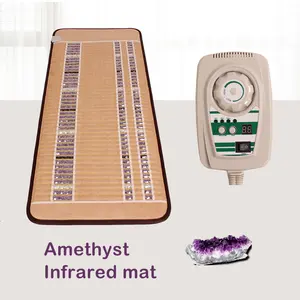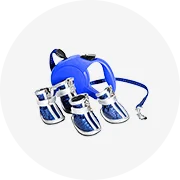Reptiles are cold-blooded. This doesn’t mean they are vicious, but rather that these animals can’t heat themselves. To regulate their temperature, they change their environment, basking in the sunlight for warmth or taking a bath at a river to cool off. For keepers who have reptiles as pets, it’s important to replicate the animals’ natural habitat as closely as possible. To do this, reptile heating pads often come in handy.
How do reptile heating pads work?
The temperature inside the reptile’s enclosure can vary quite a bit throughout the day, which might not be optimal for the animal. A heating pad ensures that the reptile will have enough heat to be comfortable in the vivarium without overheating. This is because the pad uses infrared light to heat up the enclosure, which avoids increasing the temperature of the air.
Types of reptile heating pads
The pads can come in a variety of styles, each catering to the necessities of different animals. A lizard heating pad, for example, is often used as a mat under the tank. It’s important to leave a gap between the vivarium and the mat to avoid overheating. This way, the pet can remain warm without suffering burns. Tortoise heating pads, on the other hand, are used above the enclosure, mimicking the animal’s natural habitat. Other types of pads can be attached to the sides of the structure. They will usually come with a sticky surface, providing heat from a higher position, which may be ideal for certain reptiles.
Can reptile heating pads be harmful?
Whenever dealing with sources of heat, the risk of accidents is never negligible. This involves not only damage to the animal, but also to the enclosure. For example, an under-tank heating pad should not be used for turtles and tortoises, as the animals won’t notice the rising temperatures as quickly. In the same vein, it’s important to not cover the whole substrate, as there needs to be a temperature gradient inside for the animals to adjust themselves. Furthermore, wooden vivariums in particular are at a great risk of being damaged or burned by the heating pad if there’s direct contact between them.
Watching the reptiles’ behavior is also crucial to determining if they are comfortable in the tank. Snakes, for example, may start “stargazing” or bend their head backward. Lizards might become erratic and aggressive, trying to find a cool spot to hide. Installing a thermostat alongside the heating pad for reptile tanks will allow keepers to be on top of the temperature changes and adjust the layout accordingly.





























 浙公网安备 33010002000092号
浙公网安备 33010002000092号 浙B2-20120091-4
浙B2-20120091-4